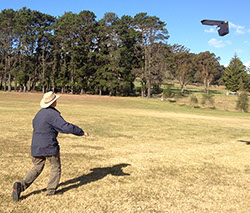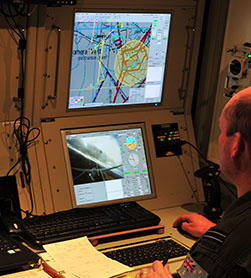Remotely Piloted Aircraft Systems (Drones)
This page is under development

© Commonwealth of Australia
If you are unable to pursue a career as an airborne pilot, opportunities are increasingly becoming available in both civil and military sectors for Remotely Piloted Aircraft System (RPAS/Drone) operations. The training required will depend on whether you just want to fly as a hobbyist or you want to undertake commercial operations or operations within the ADF.
RPAS are being used in a variety of industries including filming, surveying, real estate, agriculture, utilities inspection, surveillance, reconnaissance and many more. They range in size from micro to the size of a small business jet.
Rules for the operation of RPAS are contained in the Civil Aviation Safety Regulations Pt101 and the accompanying Manual of Standards.
RPA categories and weight classes
RPA are divided into a number of categories:
- aeroplane
- helicopter (single-rotor class or multi-rotor class)
- airship
- powered lift (hybrid aeroplanes with vertical take-off capability).
RPA are also divided into weight classes:
- micro: with a gross weight of 100 g or less
- very small: with a gross weight of more than 100 g and less than 2 kg
- small: with a gross weight of at least 2 kg and less than 25 kg
- medium: with a gross weight of at least 25 kg and less than or equal to 150 kg
- large: with a gross weight greater than 150 kg (or > 100 m3 envelope for airships).
Types of Operations
Excluded Category Operations 
A RPAS can be operated without the need to obtain an RePL provided:
- It is a very small RPA (<2kg) and
- It is operated within the standard RPA operating conditions or
- It is a small RPA (<25kg) and
- It is operated within the standard RPA operating conditions and
- It is operated for training or experience or
- It is operated over the owner’s property (Landholder Rule)
Standard RPA Operating Conditions
the RPA is operated:
- by visual line of sight (VLOS) only - close enough to see, maintain orientation
- and achieve accurate flight and tracking
- no higher than 400 ft (120 m) above ground level
- during daytime only – effectively, not before sunrise or after sunset
the RPA is not operated
- any closer than 30 m from people not associated with the flight3
- in a prohibited area or restricted area
- in a restricted area that is classified as RA3
- over populous areas
- within 3 NM (5.5 KM) of the movement area of a controlled aerodrome – one
- with an operating control tower
- in the area of a public safety operation without the approval of a person in
- charge of the operation
only 1 RPA flown per pilot at any one time.
All other operations will require the operator to have a Remote Pilot Licence and operate under a RPA Operator’s Certificate (ReOC)
Remote Pilot Licence - RePL
Summary
Allows the holder to operate a Remotely Piloted Aircraft (RPA) that is greater than 2kg mass for business or as part of your job in circumstances that need specialist training.
Requirements 
An applicant for a RePL must:
- Pass an aeronautical knowledge examination equivalent to that required for a Recreational Pilot Licence
- Complete the required training course for the category of RPA tone operated
- Pass a flight test
- Have at least 5 hours experience in operating an RPA
A person who holds a flight crew licence is taken to have met the aeronautical knowledge requirement.
RPA Operator’s Certificate - ReOC
Summary
A ReOC permits a range of RPA operations—subject to approval—that are unavailable to other operators.
Requirements
- A ReOC is required for any operation that is not an excluded RPA operation, including for:
- all RPA operating outside of the SOCs, other than micro RPA and model aircraft operations
- RPA weighing more than 2 kg whether or not flying under the SOCs, unless meeting the 'landholder' criteria.
- all operations with a large RPA
For more information visit the CASA Drones web page.
© Commonwealth of Australia
Operations of RPAS by the ADF
The Australian Defence Force operates a variety of RPAS across the three services and has a number of RPAS types on order.
Operations and training requirements for these aircraft are under the control of the ADF.
© The Honourable Company of Air Pilots, Australia Incorporated
USEFUL LINKS

